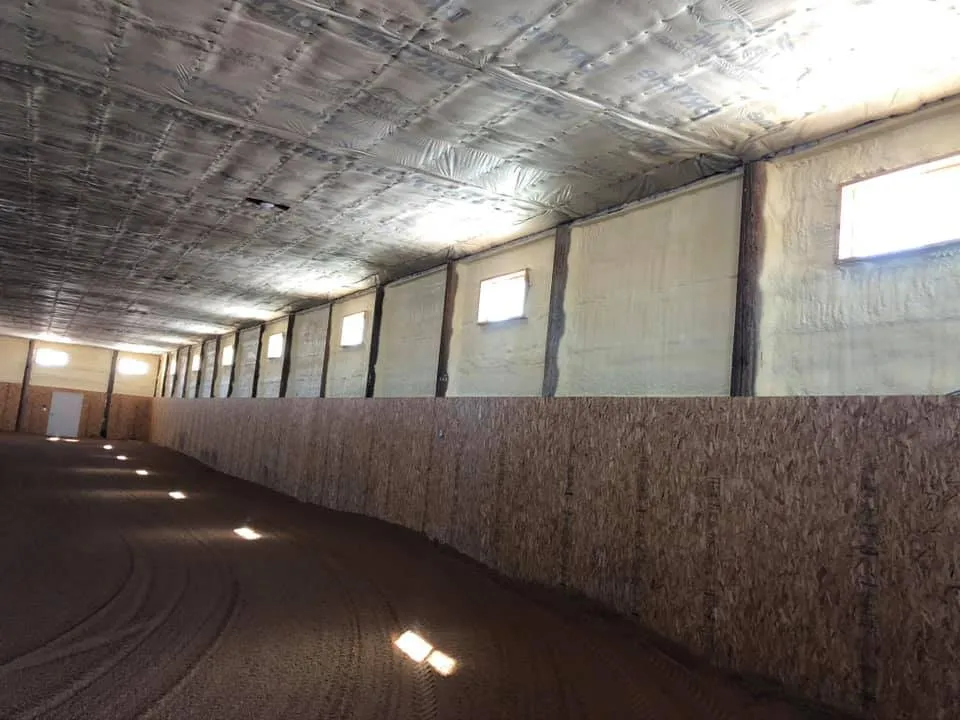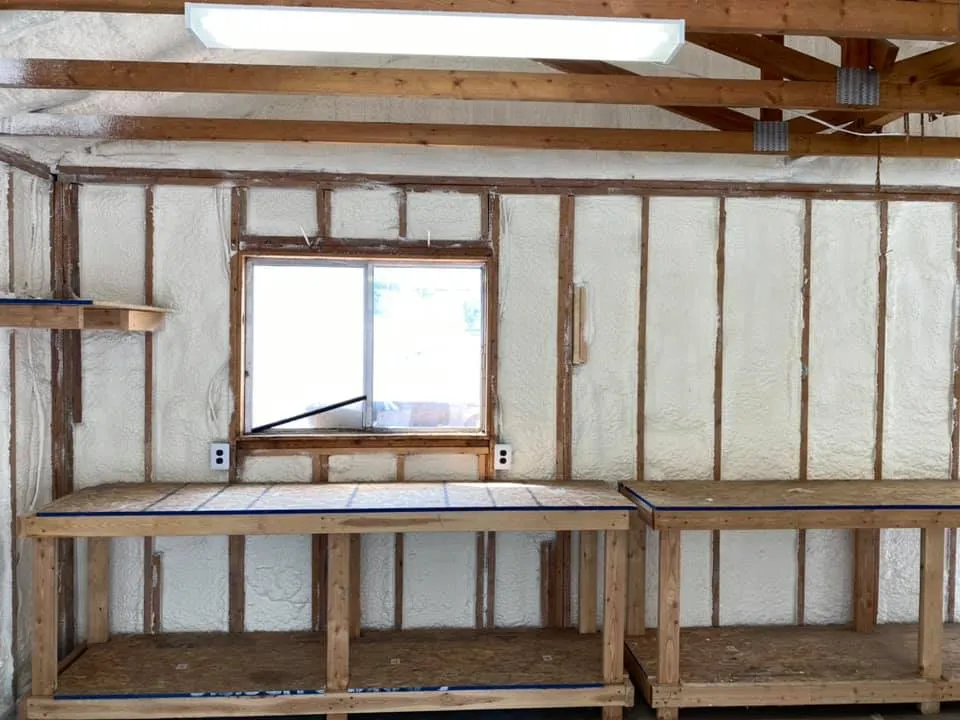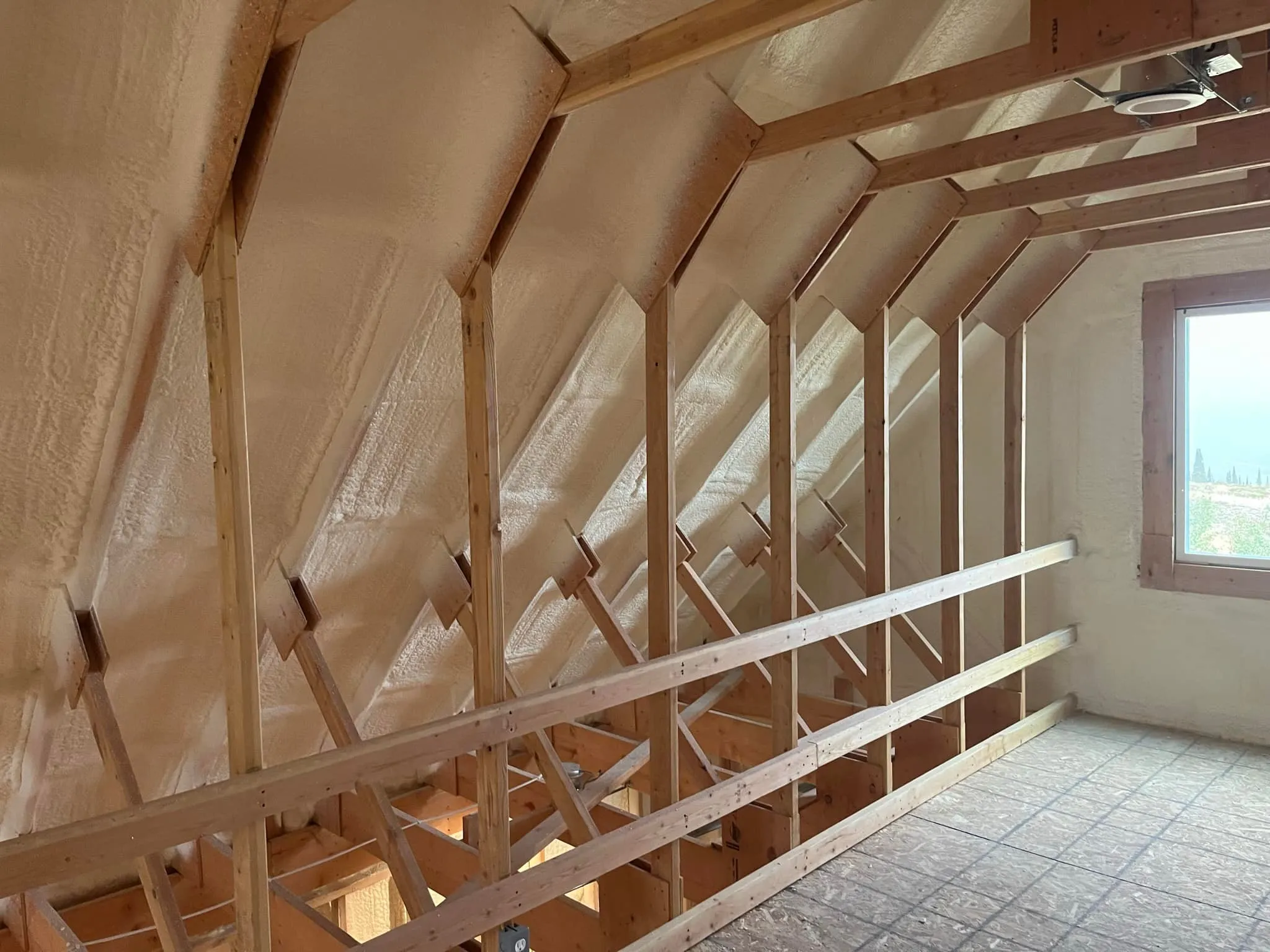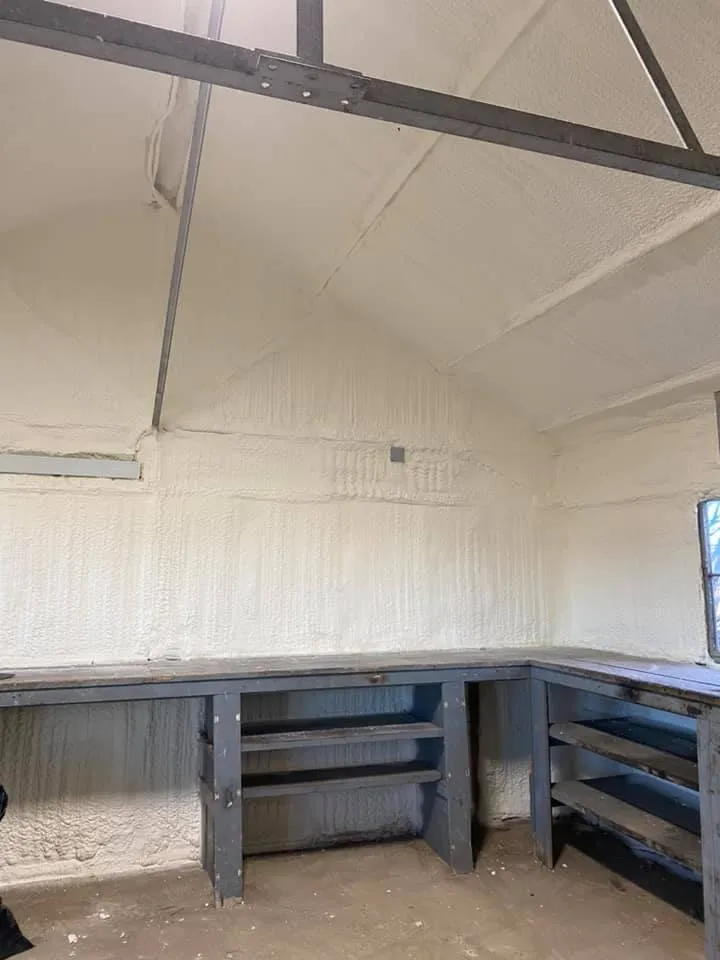

Spray foam insulation can help reduce allergens by creating an airtight seal that blocks the infiltration of dust, pollen, and other airborne particles from entering the home through cracks, gaps, and poorly sealed areas. This barrier reduces the circulation of allergens from the outdoors and limits the spread of particles between rooms. By improving air tightness, it also supports the performance of ventilation systems equipped with air filters, further decreasing allergen exposure.
High Country Solutions has extensive field experience installing spray foam in a range of building types across Wyoming’s variable climate. This work has consistently shown that homes with properly applied spray foam have lower airborne dust levels compared to similar homes with traditional insulation.
Spray foam insulation reduces allergen migration by sealing:
Its air-sealing capability minimizes infiltration from outdoor sources, which according to the Environmental Protection Agency (EPA) can contribute significantly to indoor allergen concentrations, particularly in older homes with more leakage points.
| Insulation Type | Air Seal Quality | Allergen Reduction Effectiveness | Moisture Resistance | Lifespan (Years) |
|---|---|---|---|---|
| Open Cell Spray Foam | High | High | Moderate | 20-30 |
| Closed Cell Spray Foam | Very High | Very High | High | 30-50 |
| Fiberglass Batts | Low | Low | Low | 10-20 |
| Blown-in Cellulose | Moderate | Moderate | Low | 20-30 |
Bonus Tip: In regions with high seasonal pollen levels, closed cell spray foam provides better long-term allergen control due to its superior air barrier and moisture resistance.
| Technical Attribute | Open Cell Spray Foam | Closed Cell Spray Foam |
|---|---|---|
| Air Permeance at 1 inch (ASTM E283) | ≤ 0.02 L/s·m² | ≤ 0.006 L/s·m² |
| Typical R-Value per Inch | 3.5 – 3.7 | 6.0 – 7.0 |
| Water Vapor Permeance | 10-15 perms | ≤ 1 perm |
| Adhesion to Substrates | High | Very High |
(Source: ASTM Standards; Building Science Corporation)
Bonus Tip: Conduct a blower door test before and after installation to measure the improvement in air tightness and validate allergen entry reduction.

No. It prevents future infiltration but existing allergens must be addressed through cleaning and filtration.
Without proper ventilation, humidity can rise. Install a balanced ventilation system to maintain indoor comfort.
Once cured, spray foam is inert. Installation should be done with occupants temporarily relocated to avoid exposure to uncured material.
Yes, but product selection and installation methods should match the region’s temperature and moisture conditions.
Spray foam insulation can significantly reduce allergen infiltration by creating an effective air barrier, improving moisture control, and supporting indoor air quality systems. Effectiveness depends on selecting the right type of foam, ensuring professional installation, and maintaining ventilation balance.
For more information on controlling allergens through insulation upgrades, contact High Country Solutions at [email protected] or call (307) 248-9063 for professional insight based on local experience and proven building science practices.
Inspect every 5-7 years for signs of damage, gaps, or water intrusion.
Closed cell foam maintains its integrity for decades; open cell may be more susceptible to physical damage if exposed.
It reduces conditions that promote mold growth by limiting moisture entry, but it cannot eliminate mold risk entirely.
Yes, combining with HEPA filtration and controlled ventilation maximizes results.


